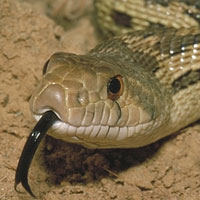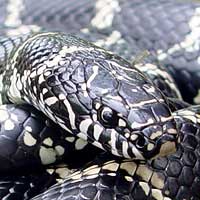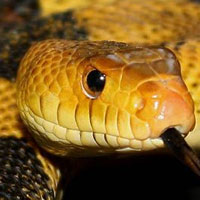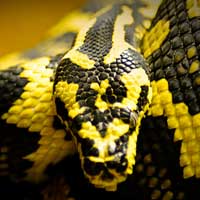Everything You Need to Know About the Great Plains Rat Snake
The Great Plains Rat Snake, scientifically known as Pantherophis emoryi, belongs to the Colubridae family, which is the largest family of snakes, encompassing a diverse range of non-venomous and mildly venomous species recognized for their adaptability and extensive geographic distribution.
Scientific Name: Pantherophis emoryi
Snake Family: Colubridae
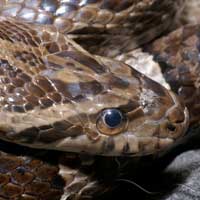
Introduction to the Great Plains Rat Snake
The Great Plains Rat Snake (*Pantherophis emoryi*), also known as Emory’s Rat Snake, is a non-venomous species native to the central United States and northern Mexico. Renowned for its adaptability and striking gray or brown blotched pattern, this snake is a favorite among reptile enthusiasts. With proper care, the Great Plains Rat Snake thrives in captivity, making it an excellent pet for both beginners and experienced keepers.
Crafting the Perfect Habitat for the Great Plains Rat Snake
The Great Plains Rat Snake’s natural habitat spans grasslands, rocky areas, and wooded regions. To replicate these conditions in captivity, consider the following:
- Enclosure Size: Provide a minimum of a 30-gallon tank for adults, ensuring ample room for movement.
- Temperature Gradient: Maintain daytime temperatures of 75-85°F with a basking spot at 90°F, and nighttime temperatures of 65-70°F.
- Humidity: Keep humidity levels between 40-60%, achievable with occasional misting.
- Substrate: Use aspen shavings, cypress mulch, or a sand-soil mix to mimic their natural environment.
- Enrichment: Add climbing branches, rocks, and hides to encourage natural behaviors like climbing and burrowing.
Refer to the table below for quick habitat guidelines:
| Habitat Element | Specifications |
|---|---|
| Enclosure Size | 30+ gallons |
| Temperature | 75-85°F (day), 65-70°F (night) |
| Humidity | 40-60% |
| Substrate | Aspen shavings, cypress mulch, sand-soil mix |
Feeding the Great Plains Rat Snake: Diet and Tips
The Great Plains Rat Snake is a carnivorous species that feeds primarily on rodents and birds in the wild. In captivity, its diet is straightforward:
- Juveniles: Feed pinky mice every 5-7 days.
- Subadults: Offer small to medium-sized mice every 7-10 days.
- Adults: Provide adult mice or small rats every 10-14 days.
- Prey Type: Use pre-killed prey to avoid injury to your snake.
- Hydration: Always provide fresh water in a shallow dish for drinking and occasional soaking.
A consistent feeding schedule promotes healthy growth and ensures your snake remains active and vibrant.
Behavior and Temperament of the Great Plains Rat Snake
The Great Plains Rat Snake is known for its calm demeanor and inquisitive nature. Understanding its behavior can enhance your care routine:
- Activity Level: These snakes are nocturnal and are most active during the evening and night.
- Climbing Abilities: They enjoy climbing, so providing vertical space and enrichment is essential.
- Docile Temperament: They are generally tolerant of handling and rarely exhibit defensive behavior.
- Stress Indicators: Signs such as refusal to eat or excessive hiding may indicate stress or unsuitable habitat conditions.
Creating a safe and enriching environment helps ensure a stress-free life for your snake.
Health and Lifespan of the Great Plains Rat Snake
The Great Plains Rat Snake can live 15-20 years in captivity with proper care. Key health considerations include:
- Common Health Issues: Look out for respiratory infections, shedding problems, and mite infestations.
- Preventative Measures: Maintain consistent temperature and humidity levels, and clean the enclosure regularly.
- Veterinary Care: Schedule annual check-ups with an exotic animal veterinarian for early detection of potential health issues.
- Observation: Monitor for signs of illness, such as lethargy, loss of appetite, or unusual behavior.
Providing attentive care ensures a long and healthy life for your Great Plains Rat Snake.
Reproduction and Breeding of the Great Plains Rat Snake
Breeding the Great Plains Rat Snake in captivity requires an understanding of its reproductive cycle. Key aspects include:
- Breeding Season: Occurs in spring following a winter cooling period.
- Clutch Size: Females lay 6-12 eggs per clutch.
- Incubation: Eggs should be incubated at 80-85°F for 50-60 days.
- Hatchlings: Provide appropriately sized enclosures and prey for juveniles once they emerge.
With proper preparation and monitoring, breeding can be a rewarding experience for snake keepers.
Tips for Handling and Caring for the Great Plains Rat Snake
Handling and caring for your Great Plains Rat Snake is straightforward with the right approach. Follow these tips:
- Handle your snake gently, supporting its entire body to minimize stress.
- Avoid handling immediately after feeding to prevent regurgitation.
- Keep the enclosure clean and provide enrichment to mimic natural behaviors.
- Monitor their health and behavior regularly for signs of stress or illness.
- Establish a routine for feeding, cleaning, and handling to ensure consistency.
With proper care and handling, the Great Plains Rat Snake can become a rewarding and fascinating pet.
Other Snakes In This Species
 Aesculapian Rat Snake
Aesculapian Rat Snake Amur Russian Rat Snake
Amur Russian Rat Snake Bairds Rat Snake
Bairds Rat Snake Black Rat Snake
Black Rat Snake Chinese Twin-spotted Rat Snake
Chinese Twin-spotted Rat Snake Diadem Rat Snake
Diadem Rat Snake Diones Rat Snake
Diones Rat Snake Eastern Fox Snake
Eastern Fox Snake Everglades Rat Snake
Everglades Rat Snake Four-lined Rat Snake
Four-lined Rat Snake Gray Rat Snake
Gray Rat Snake Great Plains Rat Snake
Great Plains Rat Snake Green Rat Snake
Green Rat Snake Ladder Rat Snake
Ladder Rat Snake Leopard Rat Snake
Leopard Rat Snake Mandarin Rat Snake
Mandarin Rat Snake Radiated Rat Snake
Radiated Rat Snake Steppes Rat Snake
Steppes Rat Snake Texas Rat Snake
Texas Rat Snake Trans-Pecos Rat Snake
Trans-Pecos Rat Snake Trinket Rat Snake
Trinket Rat Snake Yellow Rat Snake
Yellow Rat Snake



